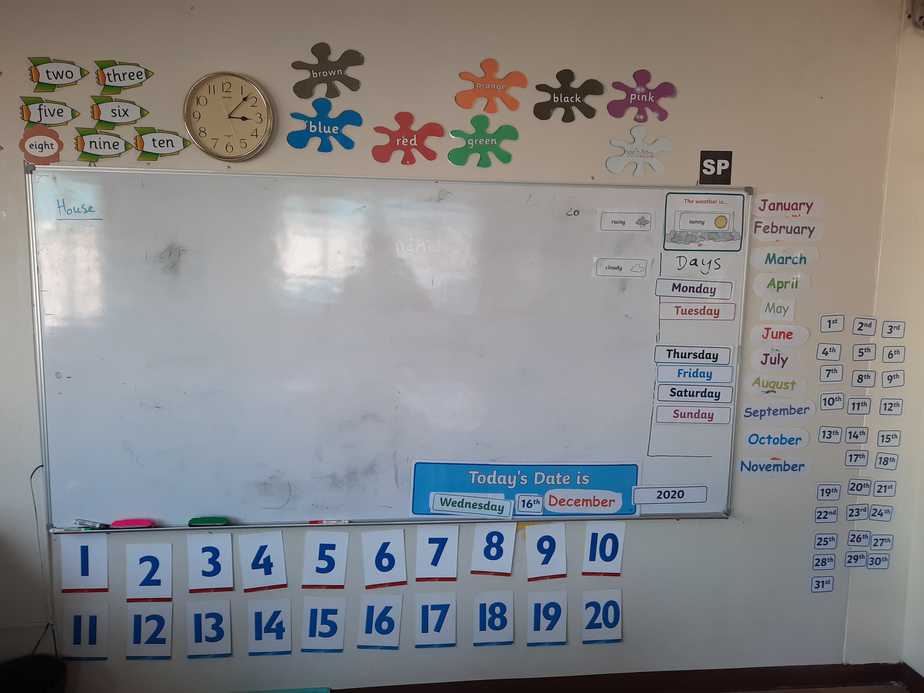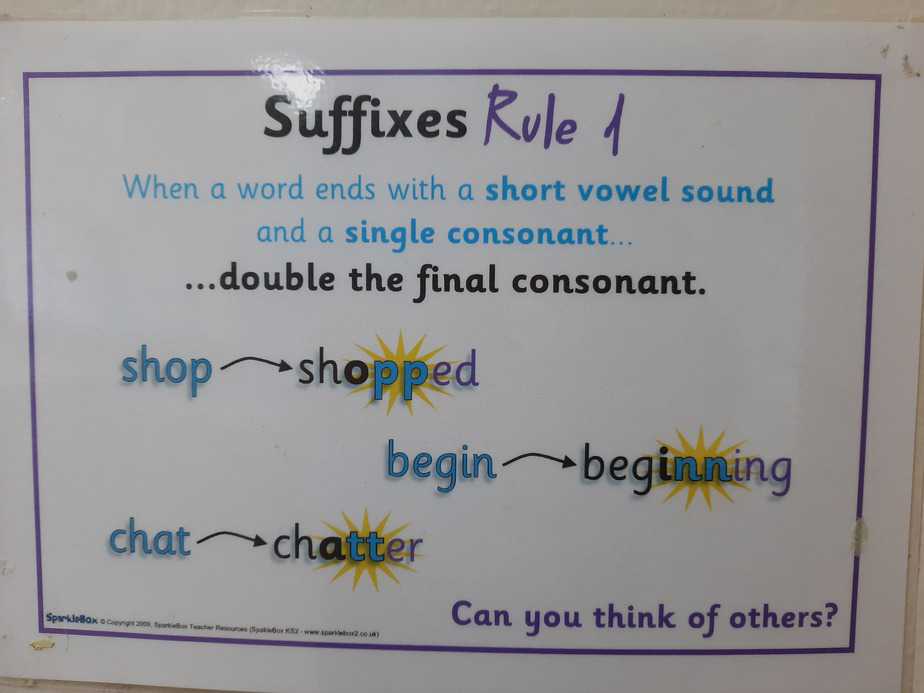Having to teach a class which contains a number of lower level ESL students in it can be quite a challenge. Here are some of the ESL strategies that I have found provide the most support. Whether you are teaching content or direct language instruction you should find something useful here:
1. Allow Translation When Appropriate
At the beginning of their language learning journey you should absolutely allow them to translate instructions and allow them to translate what they want to say back to you. Obviously google translate is fine for this but you could also assign a classmate to help with this if there is a fluent speaker of their language in the classroom, or even a teaching assistant.
If you are teaching in an international school abroad it may be that many of the students have the same first language and so another classmate can easily be called upon or assigned for a period of time to do the translating.
Just make sure you do rota the person doing the translating as it can decrease their productivity in class and get annoying after some time.
2. Allow Selective Copying
Yes, copying! This can be an especially useful tactic for lower levels. Not blind copying but if they have understood a concept from your presentation at the front of the class then at lower levels then it is perfectly fine to allow them to copy sentences, or a paragraph of work. This
At early stages of language development they do not need to be writing the sentences for themselves it is enough of a challenge to just copy AND to then explain verbally what they have copied down and the meaning behind it.
3. Use Word Banks
These are tables of words that the ESL/EAL learners are going to be faced with in that lesson along with their meanings, a pictorial meaning, antonyms and synonyms, plus an example sentence can be really helpful. Obviously, they must be clear and neatly put together for the sake of clarity. Comic Sans is the preferred font at our school.
The key though is that these word banks should be right in front of the students and be easily accessible to them. They can literally be stuck to their desk or put on the wall in front of them. If they can’t see them quickly and easily then they serve little purpose.
Ideally you would be using these same words and this same word bank over a number of lessons so they have time to become confident with using these words before moving on to the next topic.
Remember, it takes a lot of repetition for new words to finally make their way to the long term memory, 15 – 30 meaningful interactions with a word for them to remember it (source).
You might also want to read about teaching vocabulary online at this point. My article How To Teach Vocabulary Effectively Online And In Your Undies, here raised a few eyebrowse!

4. Use Visuals At Every Step
Of course, this seems like a no-brainer but as I have done a lot of in-class support over the years I have noticed that teachers are often very good at starting a lesson with lots of visuals but they tend to fizzle out as the lesson progresses, and so in turn can the EAL students focus and understanding.
It is such an easy win and most things can be turned into some sort of visual aid given enough thought: flow charts, diagrams, comic strips, storyboards, and infographics are my favourites.
It might also be worthwhile ensuring that your room has a set of picture dictionaries and making sure that those that need them have them within arms length so that they get into the habit of using them.
5. Provide Safe Opportunities To Participate
Make sure that ESL students are given safe opportunities to actually use the new language and that they have structured support where needs be. This could be in the form a of sentence starters on the board or from a supportive buddy, or teaching assistant.
Ask them the same concept checking questions and questions that will trigger use of the new vocabulary frequently and at spaced intervals to aid memory retention. Use homework as another means to ensure repetition as well as starters and plenaries. Simple traditional word games are ideal ways to recycle vocabulary quickly and easily.
Also check out: Is ESL classed as a disability?
6. Ensure Variety
Having ESL students in your class can make it a more difficult and even more stressful class to teach, but imagine how the student is feeling. It can be very overwhelming, and even frightening for younger and very low level ESL students to join a mainstream class so make it fun and interesting wherever possible.
Make sure they have got plenty of variety to what they are doing so that throughout the school day they are attempting different tasks but at their level.

7. Differentiate
Remember, you can set work for ESL students that is on a completely different topic. If a student is really new to English then it may be really difficult for you to differentiate your lesson for them and it may be more beneficial for them if you have them working on a different topic which they can more easily make progress in. ESL students need to feel progress in order to maintain their confidence levels and continue being up beat in lessons.
Differentiation is a key point in all of the TEFL certificates I have reviewed and recommend here, and rightly so!
8. Slow Down
If you are used to teaching native English speakers then you may need to slow everything down for ESL students, and that includes your speech. Don’t slow down so much that the rest of the class are going to laugh but do make a deliberate effort to moderate your pace. It will be evident straight away if they are following you or not.
The next thing to slow down is the pace of the content delivery. An ESL student does not just have the new concepts to learn like the rest of the class but they also have new vocabulary to learn as well.
Reducing the amount of content that you try to get through with them, or decreasing the depth at which you go into it with them is also a valid approach. Try to teach in small step by step manner.
9. Meet Your Specialists
Many schools have a specific ESL/EAL department these days and it is important that you use them. A few specific strategies from the team that may well know your students already can save you a lot of hard work and make the students life more enjoyable.
10. Provide Comprehensible Input
It is vital that you are correctly modelling what it is you expect from the EAL students. Whether it is a piece of writing or an oral exchange. Unless EAL learners have seen and heard what they need to produce several times then there is very little chance of them producing it correctly.
Allied to this correcting ELL students mistakes is highly important. This dies not mean correcting every single mistake they make – the lesson could go on for a long time! It means selectively correct the key mistakes that you are currnely focusing on.
For example, if you are teaching a History lesson then the language focus might be past tense. In this case, you would definitely want to correct their mistakes with past tense whether it is spoken or written.
However, you should probably ‘let go’ the mistakes they are making with articles ‘a, an, and the’, for now at least.
11. Encourage Speaking First
In addition, it is usually far easier for a student to play with the language verbally first before they are expected to put anything down on paper. Ask them questions, give them short speaking tasks to do with a partner that can support and model for them.
You might also want to read How To Make My Student’s Speak English and/or How To Get My Student’s Speaking Fluently at this point.
12. Provide Thinking Time
This is a big one. If you are going to ask questions of your EAL students then you need to give them plenty of thinking time. You may even want to warn them that you are going to ask them a question so they are alert and really focused on listening.
Although we do not want them to be translating into their own language that may well be what they are doing at the early stages of language production and so we need to give them adequate time to go through that process.

13. Simplify The Language And Not The Content
Just because an ESL student of yours has a level of English lower than the rest of the class it does not mean that they are any less capable of understanding the concepts you are teaching. In fact, they may have already studied your content in their own language and understand it perfectly well.
So, the challenge is to ensure that they are stretched academically but within the limits of the language they currently have. This is a challenge but if you ignore this then the danger is that they may feel as though you are talking down to them somewhat and their confidence may take a hit.
Pictures and diagrams can be a great way of keeping the intellectual challenge high but the language complexity within their grasp. Ordering activities, ranking activities, and grouping activities can often be used in these situations to good effect.
14. Start Your Lessons Simply
If you start at a level that all students can understand and relate to then you can build it up from there. Ideally the main concept of the lesson would be conveyed in very simple terms so that everyone has a foothold in the lesson.
You may well have to break up into differentiated activities thereafter but if all of the EAL students are onboard from the beginning then they will gain confidence from that and it will give them a far better chance of accessing the material to come.
15. Create A Strategic Seating Plan
Personally, I like to have my ESL students sat in a position near the front of the room where I can support them easily myself and where they can see the board clearly. For ESL learners it is important for them to see the facial gestures and shape of the mouth and lips to use as clues as to what is being said. Being sat towards the back of the room can severely limit the chances of being able to pick up on this.
Exceptions to this would be when I wnat them sat around a table perhaps with a teaching assistant facilitating the discussion, or if there are behavioural issues that might impact on the seating plan.

16. Write Clearly On The Board
It is amazing how many lessons I have observed whereby the teacher gives a wonderful explanation but they let themselves down when they scrawl on the board in handwriting that is hard for me to read, let alone for a student for whom English is not even their first language.
I suggest slowing your writing down and making it bigger as a first easy step to making it easier to read. During or after class go to the back of the room and take a look at what your boardwork actually looks like. For ESL students they may miss or not be able to follow everything that you say, so then, any instructions, keywords, or written on the board take on added importance.
Alternatively, if your handwriting really is bad then make use of technology/powerpoint/google slides for all of the work you would like to be displayed.
17. Balance Teacher Talk Time
In an ideal world you would focus on minimising teacher talk time and increasing student talk time as much as possible. The idea being that the more time students actually get to use and interact with the language the better.
Try to use direct language as much as possible rather than talking ‘around the houses’, telling long stories or using idioms, and metaphors to make your points. Whilst storytelling can make something very memorable for a first language student for a second language student they may get lost after the first couple of sentences and switch off for the rest of the story, this is particularly true if there are no accompanying visuals or no simple listening tasks for them to complete as they are listening.

18. Use The 10-2 Concept
At times it is necessary to speak at length and give full and long winded explanations of a topic. When this is necessary keep an eye on the clock. After speaking for a period of ten minutes, pause and ask the students to summarise what you have said to them.
This can be very useful for you in terms of gauging what they have understood from your explanations but also for them in terms of being able to clarify with a partner the main message. You can even allow second language students to do this in their native tongue if they have another partner who speaks that language too.
19. Differentiate By Outcome
Don’t set unrealistic expectations for your ESL students. It is far better to set objectives that both you and they feel that they can realistically achieve even if this is a target that seems overly basic or simple in comparison to what the rest of the class are doing.
Repetition of key points, concepts and skills is more important than rushing onto the next thing just so that they feel more in touch with the rest of the group.
If you do this, then in the long run you will find that their learning has been very superficial and none of it has really had the opportunity to properly embed in their long term memories; sure they may have covered a lot of ground but how confident are they about what they have covered? Can they actually do any of the work again independently?
20. Provide The Opportunity To Succeed Independently
ESL learners need to feel as though they are succeeding and progressing. It helps them build momentum for the challenges ahead and builds their confidence in using English. For this reason, provide numerous activities that they can actually complete on their own, see the result of and feel good about.
This could be simple gap-fill activities, ordering exercises, vocabulary matching exercises, or any type of puzzle whereby they can get a sense of independent completion. This will give you the opportunity to praise them and them to feel good about what they have done.
Our selection of speaking activities here might be useful at this point: 15 Speaking Projects and Activities anyone can enjoy.
21. Remain Positive
Maybe you differentiated down as far you thought possible but they still couldn’t access the lesson. Never fear, you can always find something to praise. Whether it was something as trivial as a capital letter or full stop being used correctly you can use anything as a point of positivity to build on.
And it is important that you make this ‘constructive positivity’ a habit, find something genuine you can both feel positive about. Even the fact that they are making mistakes is a positive as it is a massive part of the language learning process. Just keep on praising the good stuff and correcting the next thing they need to work on.
Learning a new language is hard and takes a long time, 5-7 years to achieve a decent level of fluency and language learning also progresses in peaks and plateaus so don’t get dispirited about any perceived lack of progress.
22. Follow Consistent Procedures
Write the lesson objectives, new vocabulary, and key points in the same places on the board. Use similar starter activities each lesson, use the same command words, instructions and body language wherever possible.
All of these little things make the ESL learners feel more confident in their surroundings. It gives them more of a foothold in the lesson and instead of worrying about these little things that could otherwise be confusing they focus straight away on the main teaching points of the lesson.
23. Provide The Gift Of Time
Fairly obviously, if you cannot provide a modified/differentiated version of a text then at least give them more time to read the text and take it in. You could even give it to them as pre reading prior to the lesson for homework, or you could give them a keyword activity for homework involving the new words which will be in the text you are going to go through next esson with them.
24. Talk Facing The Class
I have seen so many experienced teachers talking to the board it makes me want to cry. Without the eye contact, the facial gestures, and the ability to see the shape of the teacher’s mouth you are robbing the ESL student of some of their prime clues as to working out what you are saying.
25. Use The Power Of The Pause
This is just good teaching practice for many but after you have made a key point of the lesson, pause. Let the EAL students (and everyone else) have time to really digest the information. This extra thinking time is crucial for ESL students who may be piecing all sorts of bits of language together and translating backwards and forwards from their native language in an effort to understand what points have been made.
Obviously you are probably going to want to follow this up with some concept checking questions which of course will be highly necessary to assess whether the ESL learners have followed your teaching.
26. Arrange Effective Grammar Displays
For everyone’s sanity, make use of some very large and clear grammar posters of the types of mistakes you know your ESL students make. Then, when they next make that mistake you can simply point to the poster and save yourself regurgitating the same information time and time again – a real sanity save in my experience!

27. Display Model Answers
If the EAL learners have not actually seen what it is that is expected of them then it is very hard for them to produce it, no matter how clear the instructions are, they simply need examples.
This is true for written AND spoken language too! So, if you want them to do a presentation, model the language they will need first, and maybe have the language required for the presentation in large posters at the back of the room that they can use if they need to when it is their turn to present.
28. Use Set Phrases
Introduce key points with familiar set phrases that you use every time perhaps alongside some sort of elaborate hand gesture to indicate that they really need to be focussing on this next few sentences. Otherwise it is too easy for an EAL student to drift off during an explanation and/or never really realise what the main point was.
29. Provide Clear Instructions
Simple straight forward written instructions in plain English need to be given out for the majority of tasks. This will avoid the EAL students from feeling stressed about not understanding the instructions and give them the opportunity to keep referring back to them as they work through the task.
30. Allow Enough Time To Explain Homework Properly
Don’t be one of those teachers who leaves it to the very last minute of the lesson to set homework. DOint it this way means the ESL student will not have time to ask questions and it may mean you skimp on the explanation.
The last thing we want is for the students to get home and then realise that they don’t really have a clue what they are supposed to do. This can cause problems for the student when they come to school without doing the homework and may mean they are not at the place they need to be to start the next lesson.
More importantly it can be annoying for the parents if their child is always complaining they don’t understand your homework, and if the parents have paid a lot of money for their child to attend the school then this can cause problems later on.
31. Provide Keyword Lists In Advance
Giving the ESL students a chance to tackle the new vocabulary prior to the lesson is a great strategy. Personally, I don’t like to give out a booklet with all the vocabulary they will need for your subject because it is usually too overwhelming for the student to receive so many new words at a time and can be quite demotivating when they see all these new words they do not know.
Instead I would give out shorter lists of something more manageable like the next 12 keywords they will need.You can use websites such as Quizlet for EAL students to access your lists and play games with them on an ongoing basis. What is more you can recycle those words in a few months’ time very easily to give them the repetition that they need.
Honestly, I could probably double the length of this article pretty easily but these are some of the core things that I do to ensure that my ESL/EAL/ELL students are well supported and catered for in my lessons.
Of course, there is more than one way to skin a cat and some groups of students will respond better to different approaches so I would use these as a starting point and see what works for you. I hope you have found this helpful! you might also like: 7 Highly Effective ESL Strategies
